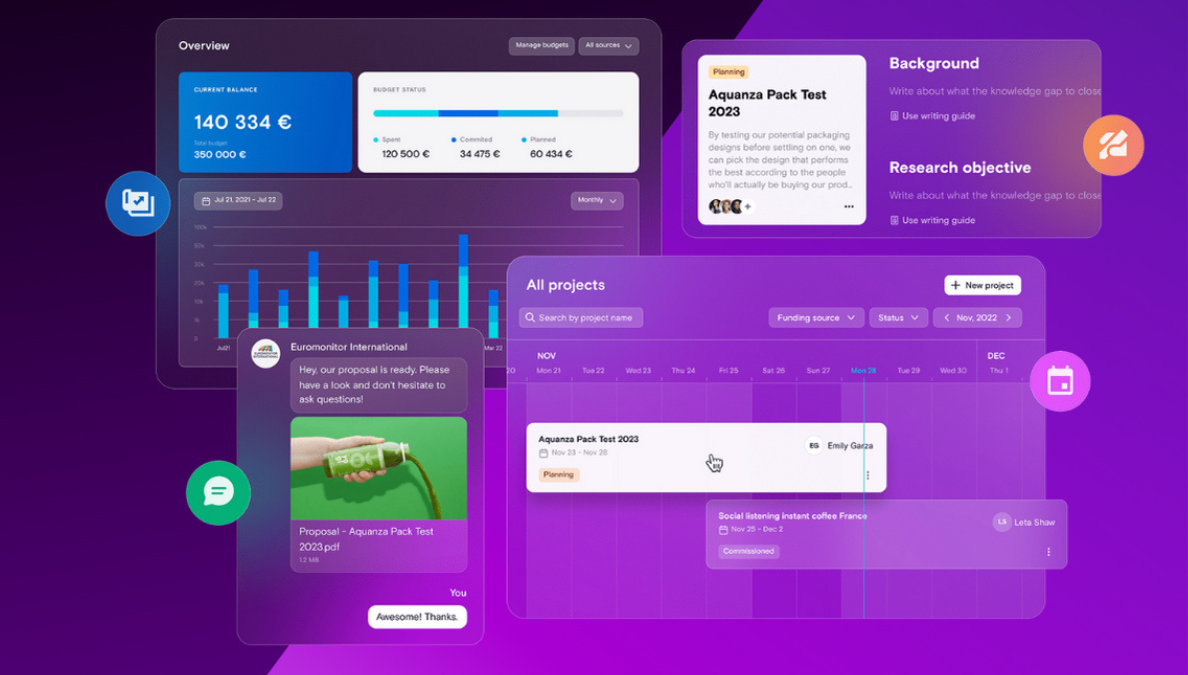Why Repositories Fail — and How to Get It Right: A White Paper by Stravito
You’ve built a repository to store your hard-worked research. Yet, nobody uses it — or even knows it exists.
If this sounds all too familiar, you’re not alone. In a recent Stravito webinar, UX research experts Emily DiLeo, UXR knowledge management strategist and founder of The Current, and Jake Burghardt, product research thought leader and author of Stop Wasting Research, unpacked why repositories often fail.
They also shared practical steps for ensuring repositories actually work and deliver the impact and clarity we need. Here are their expert insights.
Common Repository Red Flags
Throughout the webinar, Emily and Jake highlighted some common repository red flags:
- Stakeholders never visit (or aren’t aware it exists)
- Stakeholders don’t care enough about the research
- It’s difficult to find the right insights
- Research goals are unclear
- Research is scattered across files and platforms
- Definitions of “repository” don’t align
- There’s only a focus on the storage of insights, rather than the delivery
If you relate to one or more of these repository red flags, you can turn things around in several ways. Let’s go over some of the changes our industry experts suggest you make.
1. Define Goals Before Choosing a Tool
Before choosing a repository tool or platform, map out the moments when research needs to influence decisions and work backward. For example, in quarterly planning, product roadmaps, and marketing campaign meetings. Pinpoint the times where you often need more clarity.
Then, build a repository around these exact needs. This outcome-first approach keeps you focused on impact and goals, rather than specific repository features that may or may not impact its success.
Most repository tools will likely gather dust without a clear map of who needs what and when.
2. Speak the Same Language
Nowadays, “repository” is a very generic term, and people have different ideas about what it means. But when everyone uses different terms in organizations, people often get confused. Is it a “research repository,” an “insight hub,” or a “knowledge management system?”
Agree on definitions with your team up front. Generally, a repository stores raw studies, while a knowledge management hub like Stravito might have features such as condensing key findings into bite-sized pieces of content designed for wider use outside research teams.
Having a shared vocabulary is simple, but it keeps teams aligned and able to measure success more easily. With a shared understanding, team members are more likely to discuss the repository (or whichever term you use) and keep it top of mind.
3. Make Insights Actionable
Storing files in a repository is easy. Enabling insights is the harder part.
Think of your repository as a launch pad, not a warehouse. For example, Jake suggests giving each insight a permanent URL link so it can easily be embedded directly into project plans or slide decks.
Likewise, Emily suggests picking a repository solution that guides users towards related insights they might never have found otherwise.
These are just a couple of ways to activate insights, but the list goes on and on. The key is to ensure that every insight doesn’t just sit in a folder but is easily shareable and accessible to the people who need it most.
4. Build a Culture of Sharing and Socialization
Likewise, develop a culture of insight-sharing. Create small, easy rituals and routines to make research highly visible to team members and build relationships.
Here are some ideas suggested by Emily and Jake:
- Create an easy-to-find landing page for a research hub
- Make sure all insights are captured and reshare them in the future when relevant
- Look through past research and create summaries to present to stakeholders
- Host regular “insight show-and-tell” sessions with other teams, such as marketing, product, and design
- Highlight quick wins from different teams across internal channels
These practices create social momentum and keep people talking about and aware of the repository and its insights. When people see the value in sharing, the more their appetite for research grows.
5. Learn by Doing
If you haven’t properly got started with a repository yet, it’s natural to want to begin with a perfect system. But Jake and Emily say you shouldn’t wait for this.
The most important thing is to start creating a repository as soon as possible — even if it’s just a shared spreadsheet of the top five insights.
Notice how often people reference those insights in planning meetings. Refine your approach based on real usage data, and then scale up.
Early experimentation and an understanding of how insights are used in your company can help you discover the right processes before you invest in more advanced technology.
6. Let AI Automate (But Keep The Human Touch)
With some repositories (including Stravito), AI can automate tagging and suggest related studies for discovery, much like a helpful librarian pointing out relevant books you might enjoy. In many ways, AI can significantly help repositories make research more engaging and accessible to teams.
However, remember that AI isn’t a replacement for human expertise. Always keep researchers in the loop so they can check up on and validate AI suggestions.
Preserve the original research copies so nuance isn’t lost and you can always refer back to it.
Transform Your Repository Today
Is your repository a living asset or a dusty archive? If it’s more like the latter, here’s a quick summary of our experts’ suggested steps you can take to transform it:
- Start by defining the moments when insights must land
- Get teams to agree on what “repository” really means
- Focus on activating insights rather than just storing them
- Create a sharing culture
- Experiment small, then scale what works
- Use AI thoughtfully, but without replacing human judgment
Follow these steps to transform your repository into an accessible platform that contributes to smarter, faster decisions — every single time.
Watch the full recording of “Why Repositories Fail – And How to Get it Right” here.
It’s your last chance to register for the UX360 Research Summit 2025 and meet UX research leaders in person!
The ultimate gathering of UX research and design leaders is here—two days packed with the latest industry insights, cutting-edge methodologies, and next-level inspiration.
This year, the summit features 30+ industry leaders from global powerhouses such as Google, Roche, IKEA, Meta, Nestle, and many more.
Network with world-class UX professionals from around the globe. Whether you’re a researcher or designer, this event is a must-attend for anyone looking to stay ahead in the field.










 by
by 


